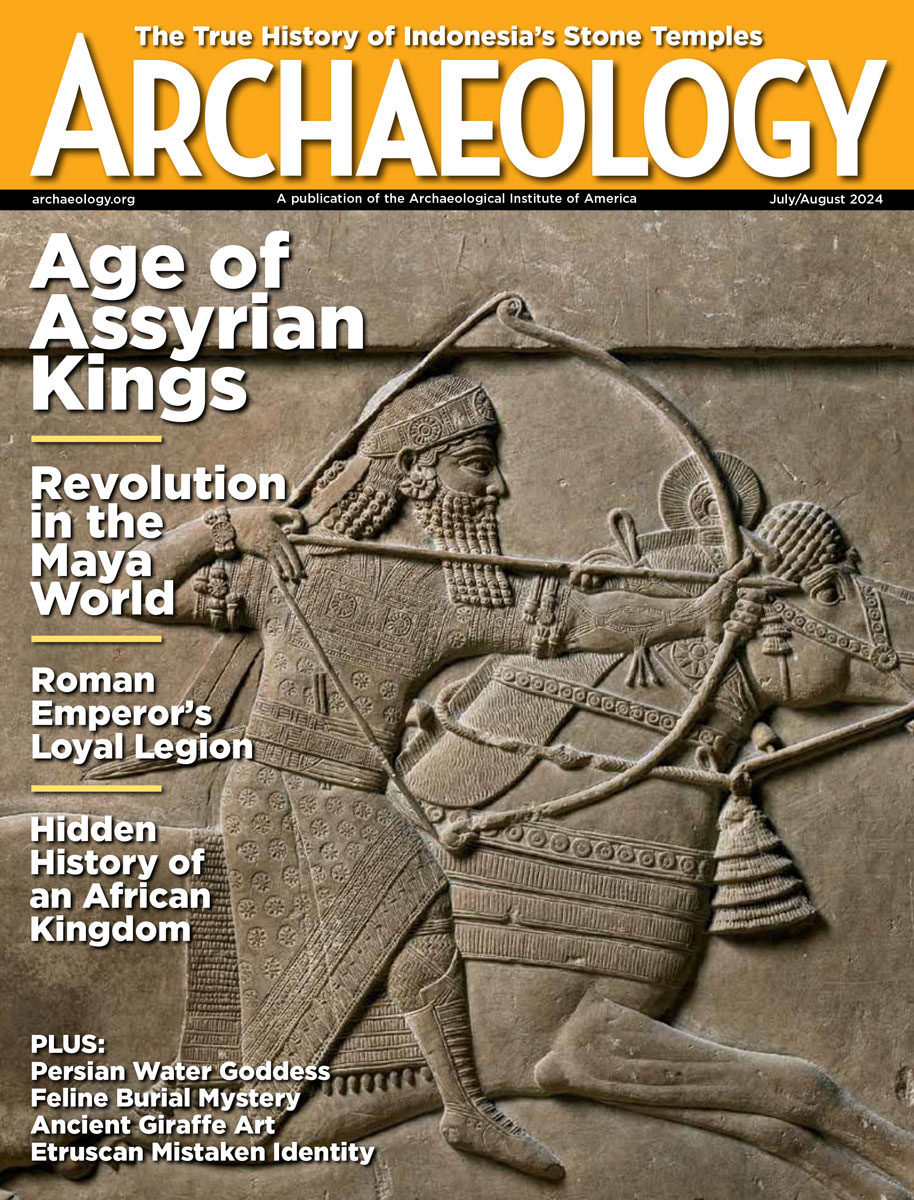Tuesday, March 10
March 10, 2009
The behavior of a male chimp at Sweden’s Furuvik Zoo is said to be the first clear evidence that a non-human animal can engage in planning. Santino collects rocks before the zoo opens and stores them as ammunition to hurl at human onlookers later in the day. “This ape must have learned that during displays he would run out of things to throw and, from this, he must have extrapolated that it would be good to have a pile of projectiles at the ready,” commented Frans B.M. de Wall of Emory University.  National Public Radio also has a story on Santino.
A first-century Gallo-Roman vineyard has been unearthed in Burgundy, France. Â
A fragment of a medieval pot unearthed in the Old City of Jerusalem bears a verse from the Rubaiyat, the love poem by Omar Khayyam. Â
German computer “archaeologist” David Ward has recreated a program that generated love poetry on the world’s first computer in 1952. Â
Italian Renaissance artist Caravaggio was the first painter to use the “camera obscura,” or darkroom, to “photograph” his models 200 years before the invention of the camera. Â
Archaeologists have stopped digging a drain to remove damaging rainwater from Mohenjo Daro. They have uncovered beads, pottery, and bones, but do not have a laboratory to analyze them. Â
Maritime archaeologist Cheryl Ward of Florida State University, a naval architect, modern shipwrights, and an Egyptian archaeologist worked together to build a replica of a 3,800-year-old ship and sail it on the Red Sea. Well-preserved timbers from the original ships were discovered in the caves of Wadi Gawasis in 2006. Those ships are thought to have been used in a voyage to the land of Punt that was undertaken during the reign of Hatshepsut.  Â
Gold jewelry has reportedly been found in the tomb of Gahouti, the head of the treasury under Hatshepsut.  Â
Here’s more information on an unidentified, early nineteenth-century shipwreck from the bottom of the Gulf of Mexico. Artifacts from the wreck are being studied in Louisiana. “We just got a lead this morning that came as an email from a researcher in Oklahoma who happened to be studying privateering in the Gulf,” said federal archaeologist Jack Irion.  This second article has a few more details.
- Comments Off on Tuesday, March 10
Monday, March 9
March 9, 2009
The stage and floor of what is thought to be Shakespeare’s first theater, built in 1576, has been unearthed just outside of the sixteenth-century limits of London. “The Lord Mayor actually passed a decree that there shouldn’t be any theatrical performances in the city… so just on the edge of the city is actually, classically, where you find all the slightly wilder, slightly more fun activities going on,” said Taryn Nixon of the Museum of London.  A piece of pottery discovered at the site bears a bearded face, framed by long hair and a ruff, which could be an early portrait of the Bard.
A South Korean diplomat in Iran allegedly tried to smuggle a stone fragment from Persepolis out of the country in a baby carriage.   Â
Last month, 3.4 tons of stolen antiquities confiscated at London’s Heathrow Airport over the past six years were returned to Afghanistan. “None of the Heathrow objects came from the [National Museum of Afghanistan]. They are from recently illegally excavated sites exported without permit,” said American archaeologist Fredrik Hiebert.
Some well-preserved leather shoe soles found in a muddy trash dump in Lyon, France, will help scientists understand how to conserve other leather artifacts. The soles are thought to date from the thirteenth to eighteenth centuries. Â
Here’s a sonar image of a wreck on the bottom of the Gulf of Mexico, off the coast of Galveston, Texas. It may represent the Caroline, a merchant ship that left Galveston in 1864 carrying a load of cotton, but it was unable to break the Union blockade. The crew ran the ship aground and set it on fire so that it would not be captured. Â
Experts at the Louisiana State Museum will examine artifacts from another unidentified nineteenth-century vessel found in the Gulf of Mexico. “It’s a tantalizing mystery. Who knows who was on that ship and what they were up to?” said a spokesman for the museum. Â
A replica of the 1667 Brick Chapel has been erected in Historic St. Mary’s City, Maryland, using clues gathered during 20 years of research and excavation. “The design ‘fits in with what the Jesuits were doing in the rest of the world,” said director Henry Miller. Â
A skull from Lazzaretto Vecchio, the cemetery for plague victims on the edge of the Venice lagoon, had been impaled through the mouth with a brick. According to Matteo Borrini of Florence University, it was thought that plague was spread by “vampires” that chewed on their shrouds.
- Comments Off on Monday, March 9









